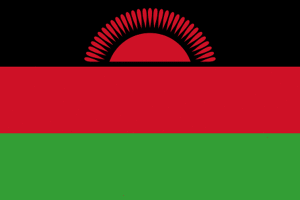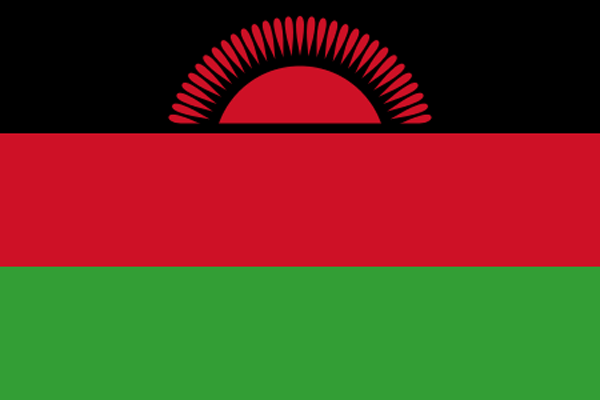Martin Lucas is the Director of the Integrated Media Arts MFA Program, at Hunter College CUNY, a videomaker and media educator.
 I am not an early riser and there isn’t much that would get me up at 4:30 AM every morning day after day for two weeks straight. Yet here I am in the back of a Land Rover threading its way along a country road leading out of Blantyre, the largest city in Malawi, a small landlocked country of 14 million just north of Mozambique. The sun is just coming up over the peaks of the Zomba plateau. Our goal is a village on the Shire river, a ‘baobab’ village, that has agreed to be the location for our filming of Who Cares?, a feature-length study of the impact of volunteer health care workers on AIDS treatment and care in rural Malawi.
I am not an early riser and there isn’t much that would get me up at 4:30 AM every morning day after day for two weeks straight. Yet here I am in the back of a Land Rover threading its way along a country road leading out of Blantyre, the largest city in Malawi, a small landlocked country of 14 million just north of Mozambique. The sun is just coming up over the peaks of the Zomba plateau. Our goal is a village on the Shire river, a ‘baobab’ village, that has agreed to be the location for our filming of Who Cares?, a feature-length study of the impact of volunteer health care workers on AIDS treatment and care in rural Malawi.
It is the first day of two solid weeks of filming, a feature film for a nation that has no film industry, in fact, only the rudiments of modern visual culture. The village is half an hour off the highway on a meandering dirt road. There is no electricity, no plumbing, a few hand pumps provide water. People walk the several miles to the highway with heavy loads on their heads or pay a small fee to ride the same distance on the back of the sturdy British-style bicycles that are the local taxi. The homes are mud brick with thatched rooves. Cows, chickens, guinea hens, pigs, dogs, and small groups of children wander scavenging the unfenced yards. Yet this is a scene of rural poverty, not chaos: The village does feature a market, a court house, a school, and a district hospital and a dusty main street that reminds me of a Clint Eastwood western.
I’ve been working in Malawi with Story Workshop a media producer that has a very large following in Malawi for soap operas and youth programming that help promote a national discussion of issues such as gender violence, AIDS, and food security all vitally important issues in a country with a life expectancy of 53 years and a GNP of $290 per person. On my first visit three years ago I brought an entire video production studio in several large suitcases I purchased on Canal Street. I have been back several times since helping Story Workshop develop a film production unit to explore the same kind of issues they address in their radio programming.
Malawi rates pretty low on most world indexes, and like many Southern African countries, it rates highly for the presence of the HIV virus. The script was developed by Story Workshop’s scriptwriting team based on months of research, listening to villagers describe their experiences with AIDS care in a situation where the inadequacies of a public health system that struggles with a litany of problems abound, from deeply inadequate funding to the shame and secrecy surrounding AIDS to a widespread lack of belief in the medical model of disease. These stories have been molded into a full-length film script over the last six month. Today we’re starting shooting.
Our first scene is set in the back of a big flatbed truck. There are a group of market women in the back with baskets of tomatoes. The women are dressed in chitenjes, bright cotton print wraparound skirts, with their hair done up in prints as well. A mobile phone rings, and one of the women fishes her mobile out of her bodice. Her face creases with concern. Her brother? Ill? The director, Peter, yells, Cut! The cinematographer Mike pulls his tripod into a new position. The grip sitting on the other side repositions his reflector to bounce the early morning sun onto the face of the other actress, looking with concern as her friend gets the bad news.
The script has been sent to me in New York several times for development. In the Spring the final version will be premiered here as part of the Center for Health Media and Policy series and New York audience will have the opportunity to share the joys and sorrows of a group of African villagers learning to develop approaches that will help them face the devastating challenge of AIDS in a country that is, on paper 11% HIV positive, with over half a million AIDS orphans. The goal of the project is to help foster national dialog around health policy makers, and for a general audience to generate thinking and dialog. I hope it will help encourage a discussion here as well. Although Malawi struggles, their exciting approach to health media is one that I look forward to sharing with audiences here.
PHOTO LINK http://www.flickr.com/photos/95114643@N00/sets/72157625246078138/
Martin Lucas is the Director of the








